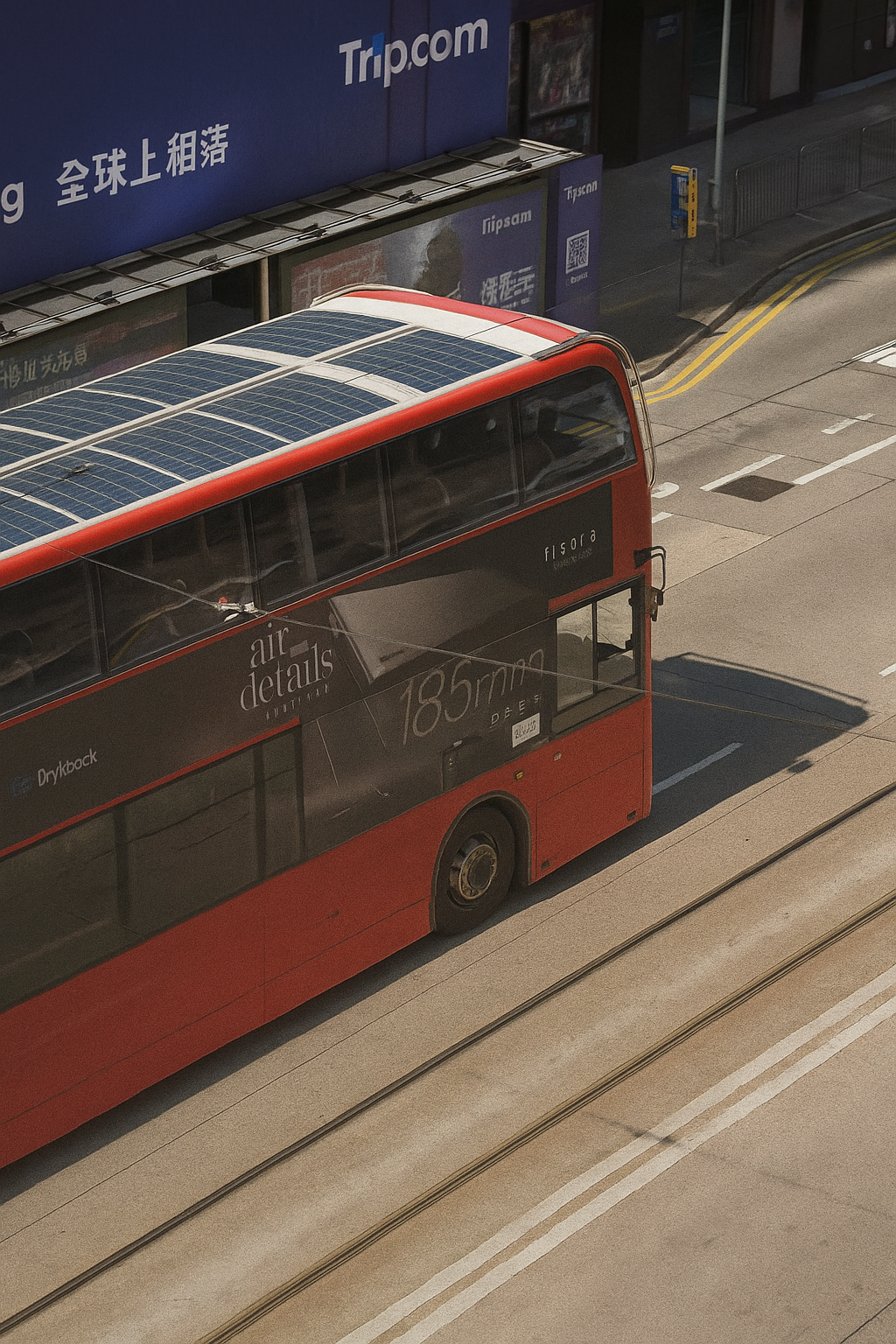As cities work to reduce emissions and build cleaner, more efficient mobility systems, solar energy is emerging as one of the most powerful tools for transformation. Public transport networks – buses, trams, rail, and their supporting infrastructure – consume significant energy every day. But with solar power becoming more affordable, scalable, and reliable, it offers huge potential to reshape the way people move through urban environments.
At Green Tech Hub, we believe solar-powered infrastructure isn’t just a technical upgrade – it’s a step toward smarter, healthier, and more resilient cities. Here’s how solar innovation is paving the way for a new era of public transport.
Reducing Emissions Across Entire Transport Networks
Public transport is already more environmentally friendly than private vehicle use, but solar power takes its sustainability to the next level. Installing photovoltaic (PV) systems on stations, depots, bus shelters, and administrative buildings can significantly reduce the reliance on fossil fuels.
Solar-powered transport hubs can:
Supply clean electricity to lighting, ticket machines, and digital displays.
Charge electric buses and support fleet electrification.
Lower carbon emissions across the entire transport ecosystem.
As cities strive to reach net-zero goals, integrating solar energy into public transport infrastructure offers a practical, high-impact solution.
Cutting Operational Costs for Transport Providers
Solar energy isn’t just good for the planet – it’s good for budgets too. Transport operators often face high energy costs due to lighting, ventilation systems, security technology, and charging infrastructure for electric vehicles.
By generating power onsite, organisations can:
Reduce long-term electricity bills.
Protect themselves from volatile energy markets.
Reinvest savings into service improvements, staffing, or fleet upgrades.
With low maintenance requirements and falling installation costs, solar systems quickly become a cost-effective asset. For public transport providers that operate 24/7, even small energy savings scale into substantial financial benefits.
Powering Electric Bus Fleets with Clean Energy
Electric buses are becoming a cornerstone of modern public transport systems – but the electricity powering them must be clean to achieve true sustainability. Pairing EV bus fleets with solar-powered charging infrastructure ensures the full journey – from generation to movement – is environmentally responsible.
Solar energy can be used to:
Charge buses during daytime depot stops.
Feed energy into battery storage for overnight charging.
Reduce strain on local grids during peak times.
Cities like Shenzhen, London, and Amsterdam are already demonstrating how green bus networks can significantly improve air quality and reduce noise pollution when supported by renewable energy sources.
Enhancing Passenger Experience with Solar-Powered Amenities
Solar-powered infrastructure isn’t limited to large installations. Smaller-scale innovations can directly benefit passengers every day.
Examples include:
Solar-powered bus shelters with lighting, smart screens, USB charging ports, and real-time timetables.
Solar-lit cycling paths and walkways that connect to public transport.
Solar-powered CCTV improving safety at stops and stations.
Off-grid ticketing kiosks that operate even during power outages.
These upgrades improve comfort, accessibility, and reliability – helping encourage more people to choose public transport over private cars.
Increasing Network Resilience During Emergencies
Solar energy adds an important layer of resilience to public transport networks. Traditional power sources are vulnerable to outages caused by storms, grid overloads, and unforeseen disruptions.
Solar-powered infrastructure, especially when paired with battery storage, can:
Keep essential services running during a blackout.
Maintain critical lighting and safety systems.
Keep communication tools and signage operational.
This resilience makes solar energy a smart investment for transport authorities looking to future-proof their operations against climate-related and infrastructural risks.
Supporting Smarter, More Sustainable Urban Development
Solar-powered public transport integrates seamlessly with broader smart-city goals. When combined with intelligent energy management systems, IoT devices, and predictive maintenance, solar energy helps create a more interconnected mobility ecosystem.
This approach supports:
Cleaner air and lower urban pollution.
More efficient use of public money and resources.
Greater adoption of alternative transport methods (cycling, walking, shared mobility).
Solar power becomes part of a wider vision – one where cities prioritise sustainability, innovation, and the well-being of communities.
Conclusion: A Brighter Future for Public Transport
Solar-powered infrastructure is no longer a futuristic concept – it’s a practical, scalable, and transformative solution already reshaping public transport worldwide. From cutting emissions to powering electric fleets and enhancing passenger experience, solar energy offers immense potential for cleaner, smarter cities.
At Green Tech Hub, we’re passionate about helping communities embrace renewable energy and accelerate their journey towards sustainable mobility. By integrating solar power into public transport systems, cities can create a greener future – one journey at a time.
If you’re interested in how solar innovation can enhance your organisation, network, or project, our experts are here to help.
